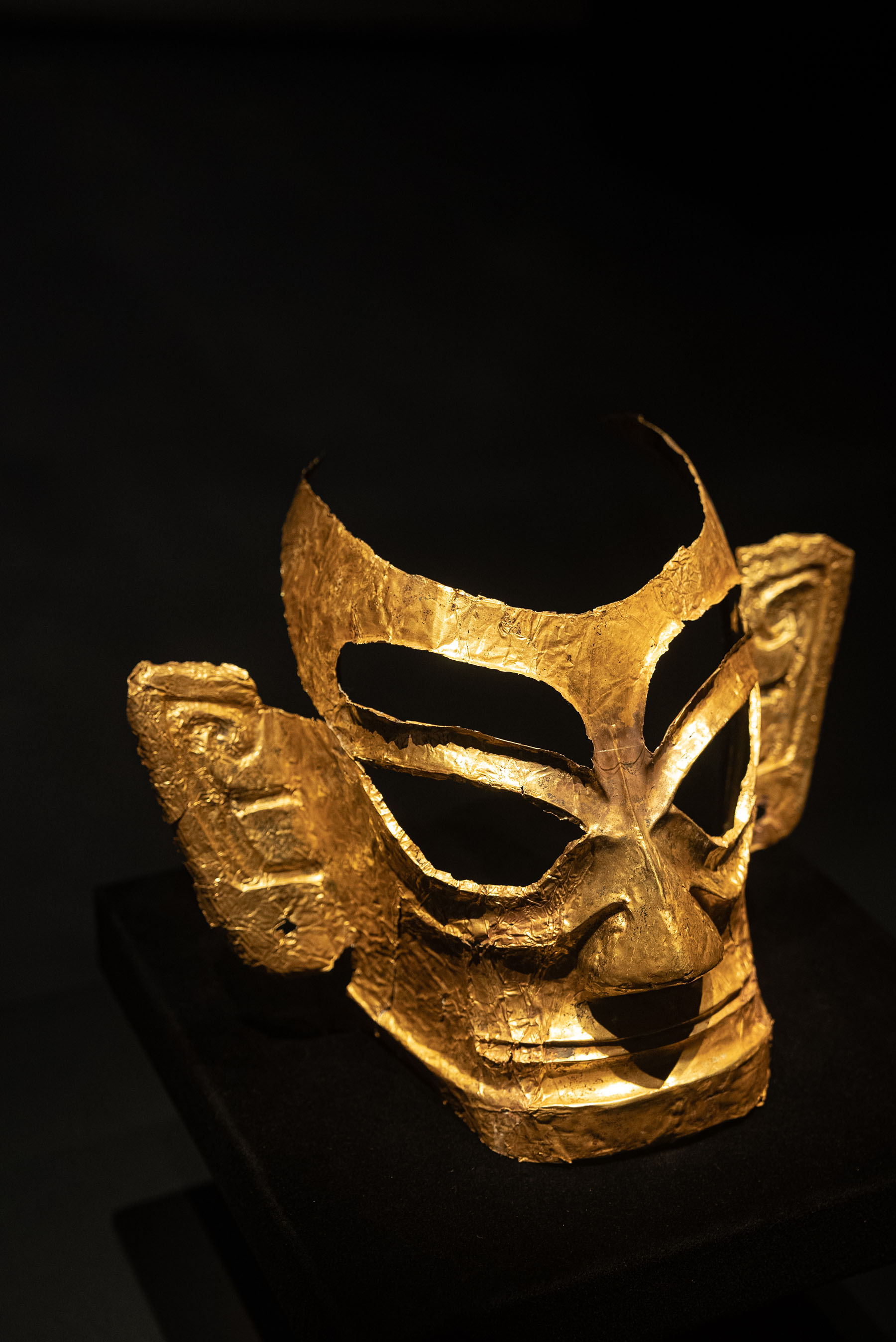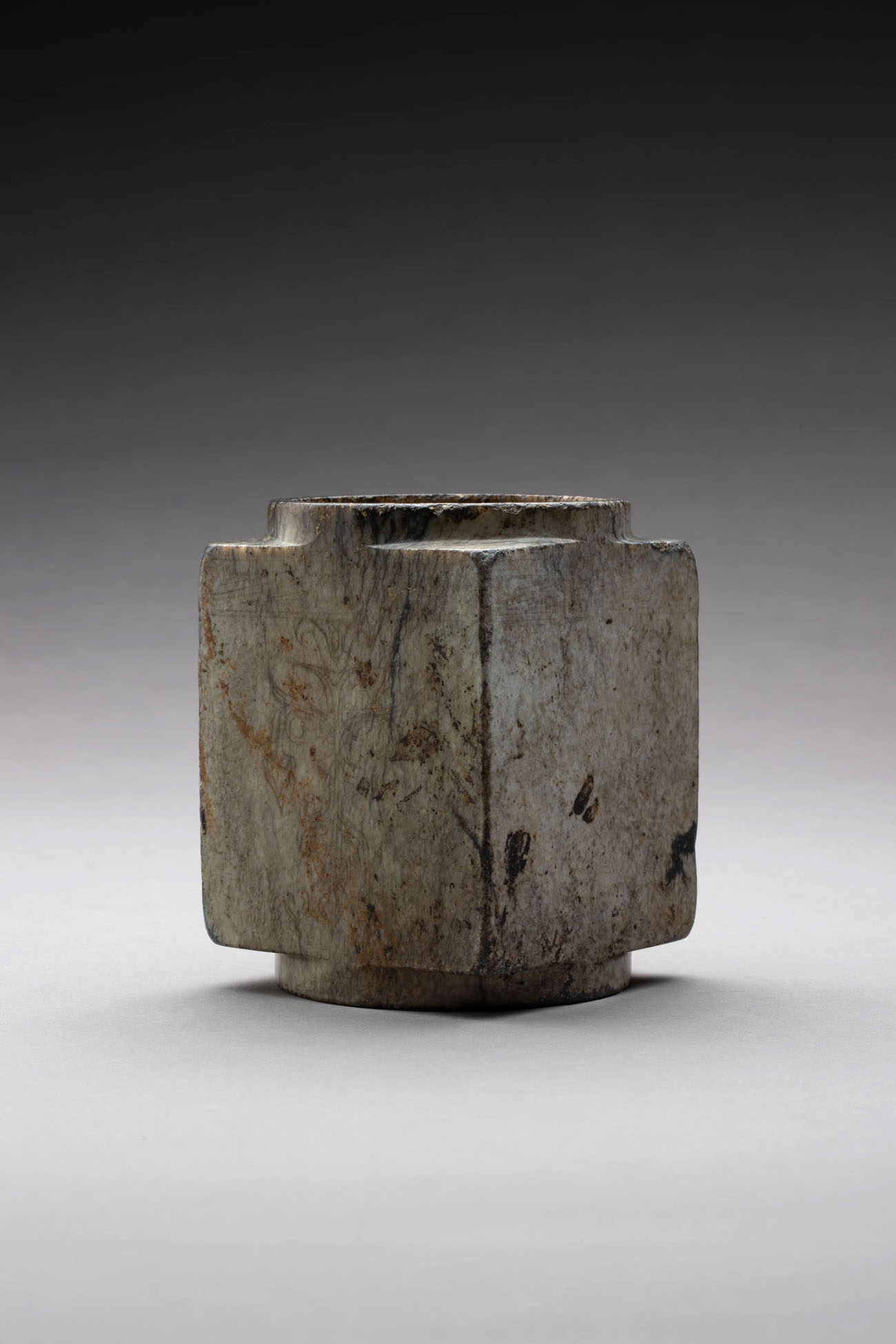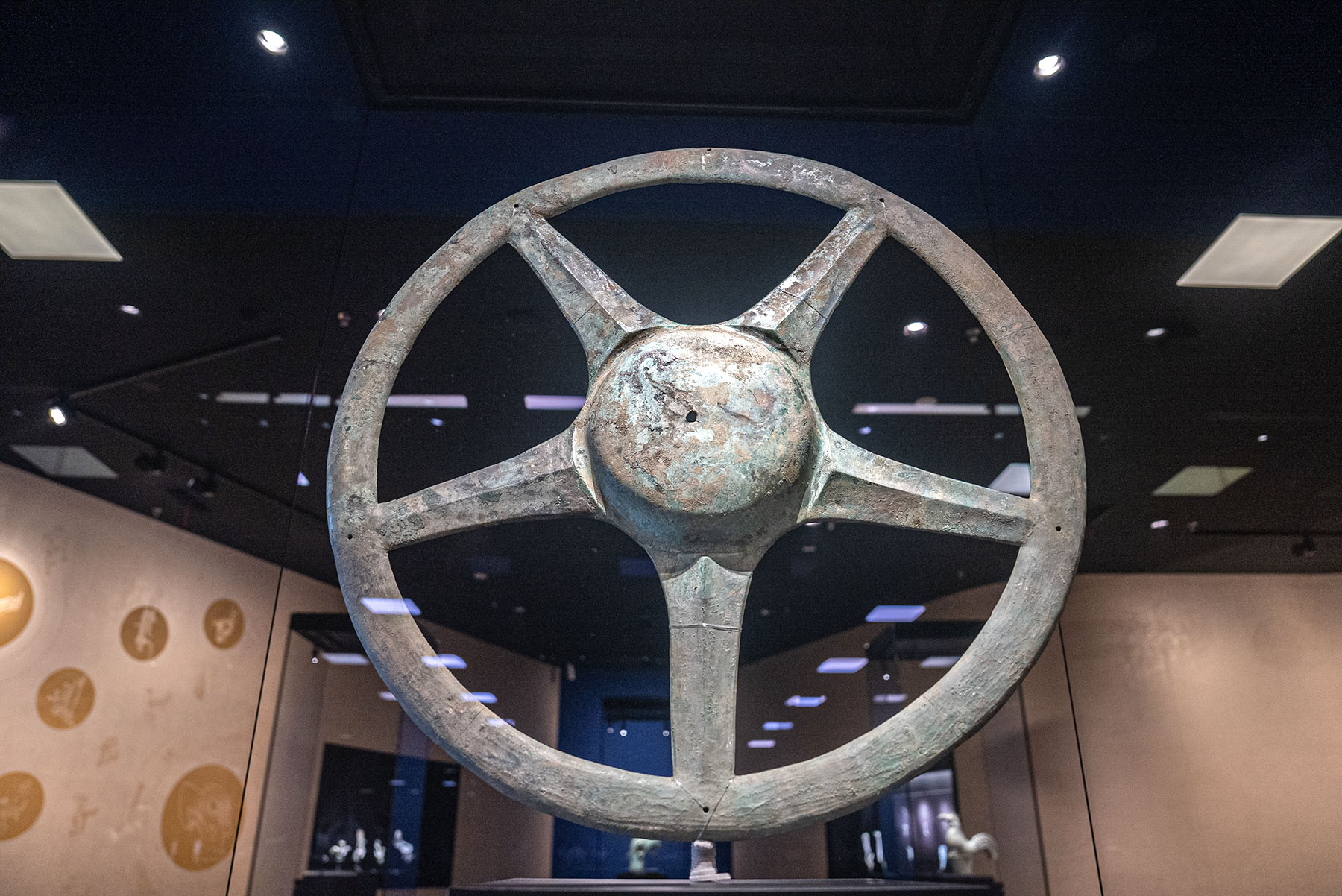New studies reveal an astonishing blend of artistry, technology and spiritual belief, Peng Chao reports in Chengdu.

Sanxingdui in Guanghan, Sichuan province, stands out as one of the most mesmerizing names in the story of early Chinese civilization.
First discovered in the 1920s, Sanxingdui has yielded a wealth of discoveries over nearly a century of archaeological research. Among its most remarkable findings are those from the eight "sacrificial pits", which have astonished the world with their exquisite artifacts and mysterious origins.
The first two pits, unearthed in 1986, revealed magnificent bronze and gold masks that instantly captured global attention. A new round of excavations beginning in 2019 uncovered six additional pits (No 3 to 8), sparking even greater public curiosity about the site's origins and chronology.
READ MORE: Sanxingdui's mysteries enthrall Beijing museumgoers
Recent research has now provided more solid clues. According to new carbon-14 analysis conducted by Peking University, there is a 95.4 percent probability that the burial of the sacrificial pits No 3, 4, 6, and 8 occurred between 1201 BC and 1012 BC.
This places the period in the late Shang Dynasty (c.16th century-11th century BC), according to a September release from the Sichuan Provincial Cultural Relics and Archaeology Research Institute.

Identical fragments found across pits No 1, 2, 3, 4, 7, and 8 suggest that these artifacts were buried at the same time, says Ran Honglin, the institute's lead archaeologist at Sanxingdui. This discovery provides key evidence for establishing a precise chronological framework for the site.
A joint study by the Sichuan provincial institute, the Palace Museum, the University of Science and Technology Beijing, and the Needham Research Institute at the University of Cambridge in the United Kingdom has also offered new insights into Sanxingdui's bronze-casting techniques.
According to the study, Sanxingdui developed an innovative casting technology centered on sectional casting, complemented by integral casting and forging, during the late Shang Dynasty.
In the production of bronzeware, the inner core, or the clay core, and the outer mold worked together to cast the shape of the vessel.
To reinforce and support the inner core during its production process, bronze workers added organic or metal strip-shaped materials, similar to steel bars used to reinforce concrete in modern architecture.

Bronze workers also used supports in the casting molds to maintain the relative position between the inner core and the outer mold, thereby avoiding misalignment and adhesion between the two components, says Guo Jianbo, a researcher at the Sichuan provincial institute.
The unique techniques effectively solved the challenges in molding slender and curved objects, and were indispensable for casting objects such as the bronze divine tree — one of the most magnificent finds from Sanxingdui. These techniques indicate that people casting bronze in Sanxingdui were flexible and skilled craftsmen, Guo says.
Multidisciplinary research on five aspects of Sanxingdui, including the manufacturing techniques of excavated gold artifacts, bronze painting techniques, standardized pottery production, rice cultivation methods and ivory preservation technology, has also made significant progress, according to Guo's institute.
Researchers say the gold artifacts from Sanxingdui, all gold-silver alloys, were likely sourced from relatively stable placer gold deposits and refined through cupellation, an ancient method used to purify silver and gold.
The technique involves heating a lead alloy that contains gold or silver in a specially designed porous vessel made of bone ash or similar materials under a stream of air. The lead oxidizes into litharge, carrying away other impurities, and is absorbed by the vessel, leaving behind purified gold and silver. The total amount of gold discovered at Sanxingdui exceeds 2 kilograms — unmatched in China during the same period.

Gold masks were used not only on statues of humans but also as independent masks, the institute says.
In addition, the painted bronze artifacts from Sanxingdui, decorated with cinnabar and lacquer, are the earliest bronze-body lacquerware in China, it says.
Ivory objects have also been excavated from the site, and on the basis of understanding the preservation status, deterioration patterns and degradation mechanisms of the ivory unearthed from Sanxingdui, the institute developed on-site preservation and dehydration reinforcement technologies, enabling the ivory to be preserved and exhibited in a normal environment.
In the late Shang Dynasty, significant changes occurred in both the quantity and particle size of the tempering materials in the small flat-bottomed pottery jars in Sanxingdui. Additionally, the body proportions and rim shapes of the pottery began to show a high degree of standardization.
Evidence also demonstrates that early Sanxingdui inhabitants practiced intensive wetland rice farming. This agricultural base supported a dense population and fueled the rapid rise of Sanxingdui, the institute says.
Covering 12 square kilometers, the Sanxingdui site includes the remains of an ancient city, sacrificial pits, residential quarters and tombs.

Scholars believe the site was established 2,800 to 4,800 years ago, and archaeological discoveries confirm that it was a highly developed and prosperous political, economic and cultural center of the Shu Kingdom, as recorded in many ancient Chinese documents. In ancient times, Sichuan was known as Shu.
It had long been thought that Sanxingdui wasn't discovered until 1929, but this has since been proven to be incorrect, says Sun Hua, a professor at Peking University's School of Archaeology and Museology.
He explains that in 2023, Huo Wei, a distinguished professor and academic dean at the school of history and culture at Sichuan University, used university archives to write a paper proving that Sanxingdui was actually discovered in 1927, not in 1929 as previously believed.
In 1933, an archaeological team headed by David Crockett Graham, who came from the United States and then taught at West China Union University in Chengdu, Sichuan — now West China Medical Center of Sichuan University — carried out the first formal excavation work at the site after Yan Daocheng, a local villager, accidentally discovered Sanxingdui.
Yan, who lived in Guanghan, unearthed a pit full of jade and stone artifacts while repairing a sewage ditch on the side of his house.
Then, in 1984, archaeologists had a major breakthrough when the remains of large palaces and parts of the eastern, western and southern city walls were found. Two years later, two large pits full of bronze artifacts, including masks and figurines, were unearthed. More than 600 were found in pit No 1 and more than 4,000 in pit No 2. Since the end of 2019, six additional pits have been discovered and excavated in the same area.

Artifacts from the new pits include a bronze altar, a tortoise-shell-shaped vessel covered with a net, a human figurine with a serpent's body carrying a zun — a vessel used for rituals — on its head, and a bronze artifact shaped like a dragon with a pig's nose.
Ran, the institute's lead archaeologist at Sanxingdui, says that archaeologists had never seen anything like these items before.
To date, 23,000 relics have been unearthed from the eight pits, according to Liu Zhiyan, vice-president of the Sichuan Provincial Cultural Relics and Archaeology Research Institute. Many of the important finds are on display at the Sanxingdui Museum, which is built on the ruins.
Liu Baige, a postdoctoral researcher at the same institute, says both the types and casting techniques of the bronze artifacts unearthed from Sanxingdui reflect the "unity in diversity" of Chinese bronze culture.
"The bronzeware unearthed at Sanxingdui is highly similar to that of the Central China Plains bronze culture, indicating close cultural ties between the two ancient cultures," he says.
ALSO READ: More than just a pretty face
The bronze artifacts from Sanxingdui used the piece-mold casting technique — a unique Chinese bronze-making method that originated in the Erlitou period (c.18th century-16th century BC) — with no evidence of the lost-wax casting used by northern nomadic cultures and Western civilizations, Liu adds.
Huo the Sichuan University professor says the commonalities between the bronze cultures of Sanxingdui and Central China Plains are fully reflected in their jade artifacts and ritual bronze vessels, as well as in the forms, decorative patterns, production techniques and use of raw materials for bronze vessels. This demonstrates that the two cultures were closely linked, while also indicating that the Sanxingdui site was deeply influenced by the Central China Plains' bronze ritual system, Huo says.
"Sanxingdui serves as an excellent example for us to study the origins and development of Chinese civilization, the outward cultural diffusion of the Central China Plains culture, as well as the cultural absorption and re-creation of the Central China Plains culture in peripheral regions," he adds.
Contact the writer at pengchao@chinadaily.com.cn


